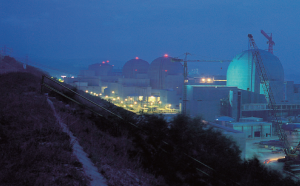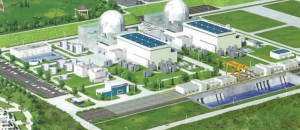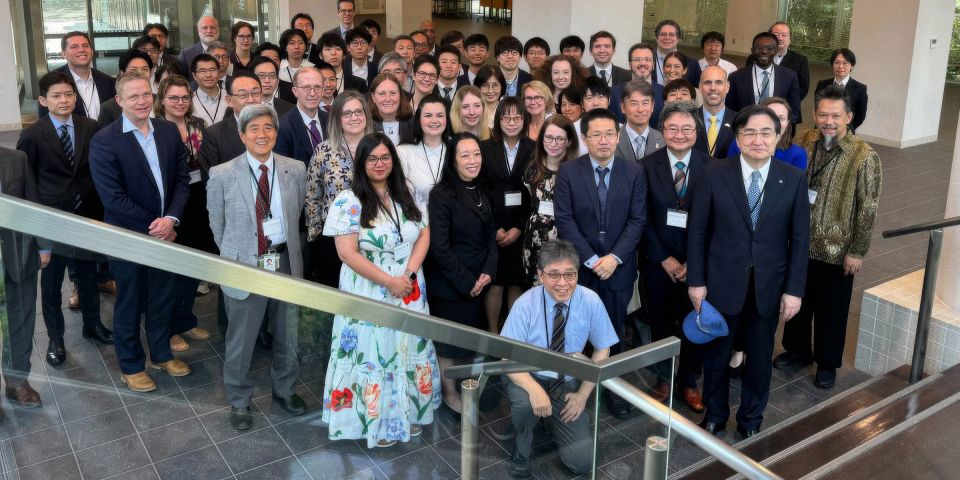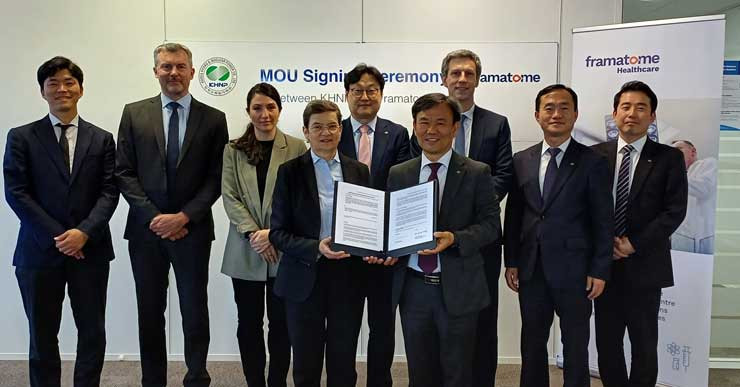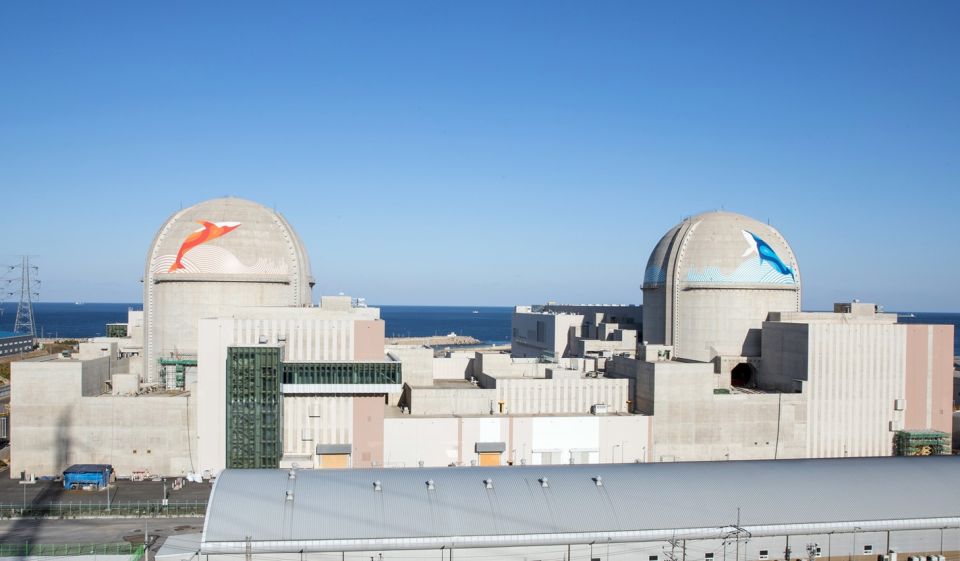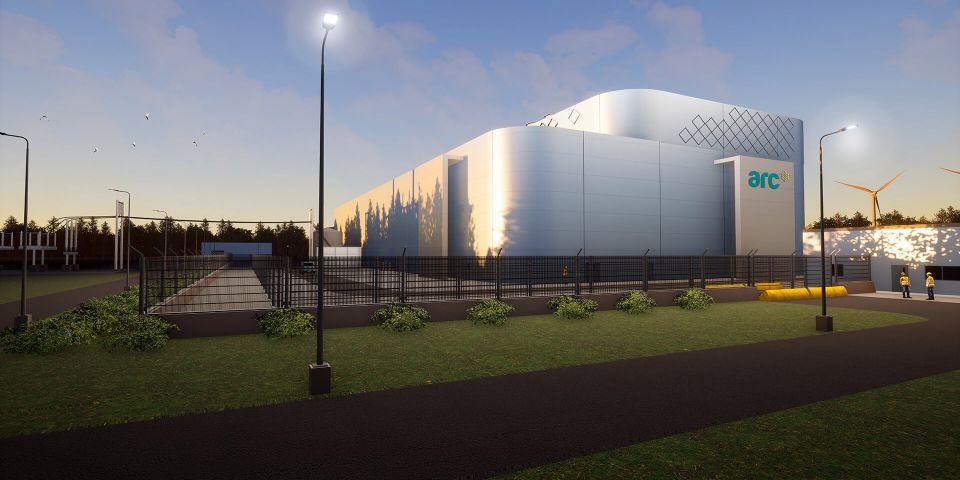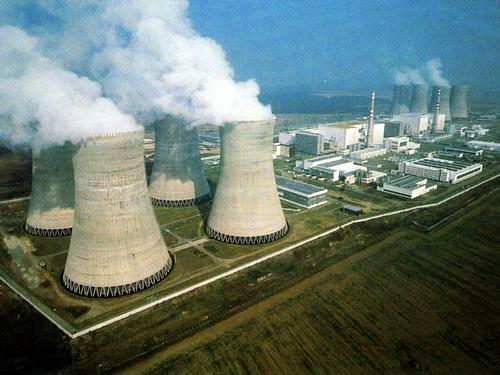South Korea nuclear power: Are the dark times over?
Over the past four years, the South Korean nuclear power program has suffered a set of very public setbacks that cast doubt on the entire program's integrity, to the point where even the South Korean president's attention was directed at the enterprise, in addition to public support being damaged. A recent well-publicized realignment in energy policy has seen a reduction in the expected percentage that nuclear energy would contribute to South Korea's fuel mix, and in some quarters it was augured that the program had been crippled.
But now, there are signs that the program-led by Korea Hydro & Nuclear Power (KHNP), and including a number of associated companies and institutes-is on track to not only survive the controversies, but recover from them.
The problems
South Korea's nuclear power program has suffered two sets of events, hashed out in various press venues, which have damaged the nation's overall reputation in this field. The first, which was not highly publicized in the West, was a series of steam generator tube failures and main condenser tube failures. As one example, it was discovered in late 2011 that Ulchin Unit 4 (which was renamed Hanul Unit 4 in early 2013) suffered damage to 25 percent of its steam generator tubes. What was alarming about that wasn't the wear, specifically-pressurized water reactor nuclear plants have had a long and varied history with steam generator tube wear and either tube plugging or steam generator replacement. What was alarming was that the plant was just over two years old and that the steam generators were designed for a life of more than 30 years. At the time, the Chosun Ilbo newspaper reported that the composition of the steam generator tubes was thought to be the concern; the material was not mentioned, but it is Inconel 690. Thousands of tubes were plugged and the plant was placed back in service, but Doosan Heavy Industries is presently fabricating replacement steam generators for both Hanul Units 3 and 4.
The second set of events has been so well-publicized, at least in nuclear energy circles, that either only a brief summary or an exhaustive dissertation would do justice. Electing for brevity, suffice it to say that various schemes to advance the position of persons or companies in the South Korean nuclear industry have resulted in substandard parts being employed (particularly cable supplied by JS Cable, a company that is presently being liquidated), false quality assurance certificates being filed, and various collusion/bribery schemes among varied personnel at contractors and in the KHNP universe of subsidiaries-with involvement reaching even to the highest (former) executives. While the true extent and nature of these corrupt activities began to be illuminated only at the end of 2011, in fact the activities stretched far prior; a recent article in the Korea Herald noted that JS Cable failed to obtain certification for nuclear parts for its product twice in 2004, and then somehow immediately made a sale of such equipment for a total of 5.5 billion won (US$5.06 million). That cabling was eventually found to be defective when it triggered shutdowns at two nuclear plants, in May 2013. Many corporate offices (including those of KHNP) were raided throughout the summer, and many arrests made-arrests that included a former president of KHNP. Much more than cable from one company has been implicated; implicated parts (questionable parts, or questionable certifications, or both) were thought to possibly be in service at as many as 11 nuclear plants in South Korea. A massive program to find all such parts and associated companies and persons was launched and pressed with a vigor and aggression not normally seen in industrially related investigations. Public sentiment was soured by power shortages and outages caused partly by having three nuclear plants (Shin-Kori Units 1 and 2, and Shin-Wolsong Unit 1) shut down due to concerns over the parts and their certifications.
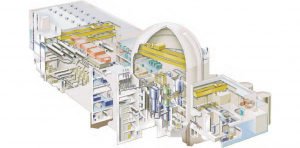
Prior to the APR1400 NPP now being built, the standard Korean plant was the OPR1000 - seen here in a diagram. (Courtesy KEPCO E&C)
The solutions
When Cho Seok, the new chief executive officer of KHNP, took office in September 2013, the first thing he did was to make a public apology for the scandals that had plagued his company and had troubled the people of South Korea. He said, in part, "I deeply apologize for the recent issues that KHNP has caused, and for bringing a deep disappointment to the public. And, I sincerely apologize that there was a problem in the [national] power supply due to unplanned outages." He went on to say, "Our domestic nuclear project is facing the utmost crisis in that the public trust hit the ground due to the Fukushima nuclear plant accident, and the corruption surrounding the nuclear industry."
His plan-no doubt developed with considerable help-to reverse these setbacks is large and sweeping, and involves an entire reshaping of the corporate culture at KHNP and its allied and subsidiary concerns. This "Three Reformation Movement" centers on clear and frank discourse with the public, the instilling of a sense that the company is working for the public good, and the development of a new culture that eliminates "behind the scenes" deals, promotion and authority based only on seniority, and ties with associated persons or families in business or academia-all of which had essentially been "business as usual" prior to the revelations of impropriety.
Cho, of course, also has to face the fact that much of his remaining organization is demoralized. "I will put enormous efforts into recovering the morale of the organization that hit the ground due to the long-term investigation by the prosecution and the absence of a CEO, and solidify the cooperation with the government, so that launching the new vision of KHNP can be established."
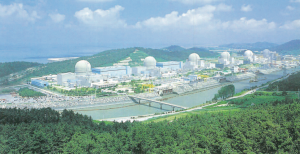
Hanbit (formerly Yeonggwang) Nuclear Station. Two nuclear stations were renamed in early 2013 at the request of fishermen because of perceived impact to their businesses.
As one might expect, no small plan would be enough to overturn the old corporate culture. The present overhaul plan comprehensively addresses the corporate structure, the people themselves and the overall corporate culture, and begins with three items KHNP calls management innovations: Eradicate corruption related to nuclear power plants; drastically strengthen safety by launching a management-focused "safety first" attitude; and start a process of not temporary but continuous innovation in all areas. Details of the plan include methods to root out all possibility of corruption in the supply chain, partly by changing the corporate safety culture and partly by flooding management out into the field. In fact, in a press release, KNHP stated that this past November it polled employees who identified 10 "unhealthy practices" ongoing at the company and found that fraud and "adhesive relationship with subcontractors" were cited problem areas-which surely cannot have been much of a surprise. What was important was polling the employees and implementing policy based on the feedback.
KHNP has selected "role model" corporations and organizations noted for operational excellence and safety culture on which it will model itself. These include Exelon, the World Association of Nuclear Operators, the International Atomic Energy Agency, the Institute of Nuclear Power Operations, and the Electric Power Research Institute, among others. It has also formed a Nuclear Power Plant Management Committee, on which the following concerns have seats: KHNP; KEPCO Engineering & Construction (the architect-engineer firm for Korean plants); KEPCO KPS (which performs power plant maintenance and engineering); KEPCO Nuclear Fuel; and Doosan Heavy Industries (the major nuclear vendor for both nuclear island and balance-of-plant in Korea.) This committee will oversee the entire process from design to construction and, one might expect, ensure that the new management practices are being extended throughout this "known universe" of the South Korean nuclear industry.
Not standing still
The South Korean government, while publicly condemning the corruption in the nuclear industry in its nation, has by no means put the brakes on nuclear new builds in the country while KHNP sorts things out. On January 29, the South Korean government announced its final approval for the construction of Shin Kori Units 5 and 6, which according to present plans will actually begin construction in September 2014 and will be complete by December 2020. These plants were actually planned as far back as 2008/2009 in the "Fourth Power Supply Plan" and the "Established Project Basic Plan," and are the seventh and eighth APR1400 nuclear plants to be ordered. Six of these plants (an advanced GEN-III+ plant) are under construction around the world now, with the lead plants Shin Kori Units 3 and 4 expected to complete and connect to the grid later this year. Of the remaining four, Shin Hanul Unit 1 (in Korea) and Barakah Unit 1 (in the United Arab Emirates) began construction in summer 2012 while Shin Hanul Unit 2 and Barakah Unit 2 began construction in May and June 2013, respectively.
South Korea's present energy plan includes having roughly 30 percent of the nation's electric power generated by nuclear energy by 2024. This will require roughly a dozen further reactor plants to be constructed and completed by that time-meaning that it cannot afford to stop building. The nation is also working on adding to the commercial nuclear plant design it is building at home and abroad now-the APR1400-with several other designs. Here are details of three:
- APR+ This is a developed version of the APR1400, increased from a 1400-MWe net output to 1500 MWe and modified in many small ways in an attempt to improve efficiency and capacity factor (a target of 92-percent availability being the goal over the APR1400's designed 90 percent, with unintended shutdowns reduced from less than 0.8 times/year to less than 0.2 times/year). Improvements in construction technique and modularization will cut construction time from the intended 42 months for the as-designed APR1400 to 36 months. The plant will include a passive auxiliary feedwater system to allow natural circulation cooling via the steam generators in case of station blackout, and will also be designed for daily load following operation in completely automatic control with a power range of 50 percent to 100 percent daily. This design is planned to be ready for construction in 2016.
- SMART The Korea Atomic Energy Research Institute (KAERI) jumped the rest of the world on July 4, 2012, when the Nuclear Safety and Security Commission issued Standard Design Approval for the SMART small modular reactor-the first commercially licensed small modular reactor anywhere in the world. (SMART stands for System-integrated Modular Advanced ReacTor; the plant is really what properly is called an integral pressurized water reactor.) The SMART project began in 1997 and led to a very modern 330 MWt/100-MWe SMR that South Korea claims is ready to be built and exported immediately. An alternate plant design allows for the production of 90 MWe electric power and desalination of 40,000 tons of water daily. The present design of passive heat removal equipment allows a 36 hour "no operator action" window during all design basis accidents, according to KAERI, with core damage frequency considered about 1/10 that of today's commercial reactors. Preliminary electric power costs for the SMART are estimated 6 to 10 cents per kilowatt-hour. Future design improvements include alteration of the passive residual heat removal system to allow a full 72 hour "operator no action" time window identical to that of the large Westinghouse AP1000. The plant is said to have a 20-day "grace period against Fukushima type accidents," by which is meant long-term station blackout. According to the World Nuclear Association, KAERI plans to build a test and demonstration unit by 2017.
- Sodium Cooled Fast Reactor KAERI and the Sodium Cooled Fast Reactor Development Agency (SFRA) are working on a project to construct a commercial fast reactor whose target "go/no-go" construction start date is 2019. According to SFRA, on-site spent fuel storage at Kori Unit 1 will be full in 2016. Recycling spent light water reactor fuel using fast reactors would, it says, improve the uranium utilization rate over 100 times, as well as reduce the volume of high-level long-term waste that has to be stored.
Overseas contracts
Quite aside from the construction of new nuclear units at Barakah in the UAE, South Korea has its hat in the ring in two other places. A consortium of firms with KHNP at the helm is in the bidding process to construct a fourth nuclear unit at Finland's Olkiluoto nuclear station-long in the news due to overruns with that station's third unit, an AREVA EPR. This unit would theoretically begin construction in 2015 and be on line in 2020, according to the World Nuclear Association. Separately from the consortium, Doosan Heavy Industries is said in a recent report carried by the Korea Herald to be the likely signer of a deal to maintain and upgrade Électricité de France's nuclear plants in the United Kingdom. This deal is rumored to be worth approximately $2.8 billion.
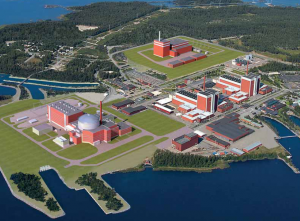
Olkiluoto site, Finland. Units 1 and 2 lower right; Unit 3, an AREVA EPR at left and at right rear a generic representation of a fourth unit. A second prospective location for this unit on the same site is even further toward the coast and further away from existing units. South Korea and KHNP hope that this fourth unit will be an APR1400. (Illustration courtesy TVO)
Hands across the seas
A recent news photo presented in the Korea Herald reminded the world of an often forgotten (or ignored) success story in the whole scheme of the South Korean venture in nuclear energy: education. On the Kori nuclear power complex site (which houses Kori Units 1 through 4, Shin Kori Units 1 through 4 as well as the site for the newly announced Shin Kori Units 5 and 6) are the Kori Nuclear Power Education Institute and KEPCO's International Nuclear Graduate School (KINGS). This advanced facility takes highly qualified students from both inside and outside the country; of 100 students at any time, half are from South Korea. The curriculum is designed to produce leaders in every area and aspect of the nuclear industry. Education begins with study of nuclear systems and safety, and nuclear engineering fundamentals. Focused systems engineering and then a specific APR1400 intensive course are added. Students then select one of three "specialization programs," which are the technology engineering program, the systems engineering program or the project engineering program. With one to three years of study beyond this master's level program, KINGS will offer a doctor of technology program.
With this program, South Korea is not only building its own future generation of nuclear professionals, and not only building that of other nations whose students attend, it's building a part of an international framework of cooperation in education and development. As one example, KINGS is a partner in cooperative exchange programs with the Virginia Nuclear Power Education and Research Consortium which is allied with colleges such as Virginia Tech, George Mason University, William & Mary, and the University of Virginia, as well as with Westinghouse Electric.
The future
As we can see, South Korea's nuclear program has had an extremely difficult period that has resulted in changes that can only be good, including exponentially increased scrutiny. The shift in the corporate culture to value its employees and to eradicate those kinds of things that can lead to shortcuts for gain, or worse, bribery, is very welcome and not only in the best interest of safety but is in fact the only possible route out of the crisis. The South Korean nuclear industry as both a force at home and abroad does have a future, which indeed looks brighter-and safer-after having weathered the storm.
___________________________
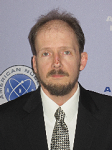 Will Davis is a consultant to, and writer for, the American Nuclear Society; an active ANS member, he is serving on the ANS Communications Committee 2013-2016. In addition, he is a contributing author for Fuel Cycle Week, is secretary of the Board of Directors of PopAtomic Studios, and writes his own popular blog Atomic Power Review. Davis is a former US Navy reactor operator, qualified on S8G and S5W plants. He's also an avid typewriter collector in his spare time.
Will Davis is a consultant to, and writer for, the American Nuclear Society; an active ANS member, he is serving on the ANS Communications Committee 2013-2016. In addition, he is a contributing author for Fuel Cycle Week, is secretary of the Board of Directors of PopAtomic Studios, and writes his own popular blog Atomic Power Review. Davis is a former US Navy reactor operator, qualified on S8G and S5W plants. He's also an avid typewriter collector in his spare time.


